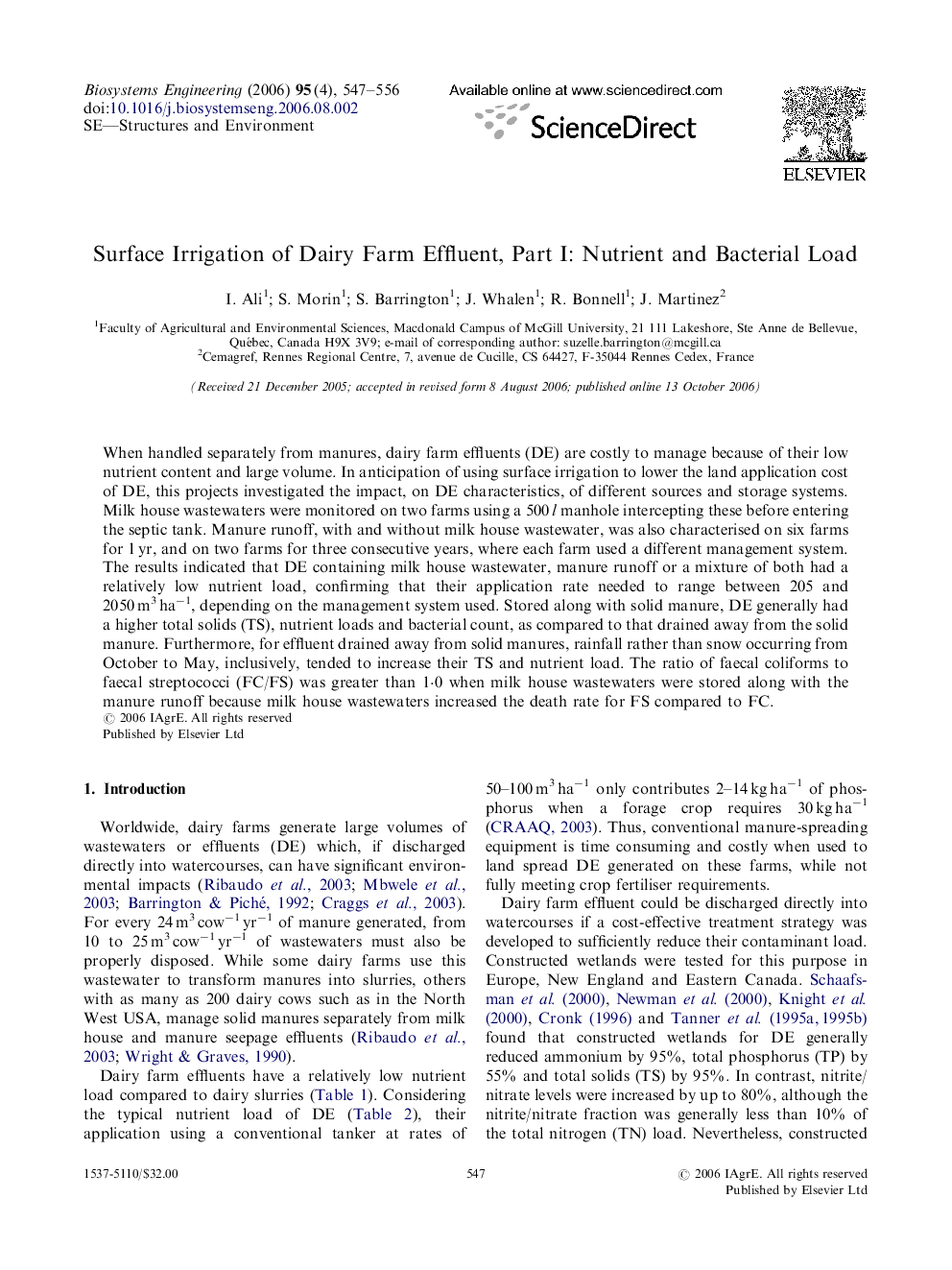| Article ID | Journal | Published Year | Pages | File Type |
|---|---|---|---|---|
| 1712798 | Biosystems Engineering | 2006 | 10 Pages |
When handled separately from manures, dairy farm effluents (DE) are costly to manage because of their low nutrient content and large volume. In anticipation of using surface irrigation to lower the land application cost of DE, this projects investigated the impact, on DE characteristics, of different sources and storage systems. Milk house wastewaters were monitored on two farms using a 500 l manhole intercepting these before entering the septic tank. Manure runoff, with and without milk house wastewater, was also characterised on six farms for 1 yr, and on two farms for three consecutive years, where each farm used a different management system. The results indicated that DE containing milk house wastewater, manure runoff or a mixture of both had a relatively low nutrient load, confirming that their application rate needed to range between 205 and 2050 m3 ha−1, depending on the management system used. Stored along with solid manure, DE generally had a higher total solids (TS), nutrient loads and bacterial count, as compared to that drained away from the solid manure. Furthermore, for effluent drained away from solid manures, rainfall rather than snow occurring from October to May, inclusively, tended to increase their TS and nutrient load. The ratio of faecal coliforms to faecal streptococci (FC/FS) was greater than 1·0 when milk house wastewaters were stored along with the manure runoff because milk house wastewaters increased the death rate for FS compared to FC.
